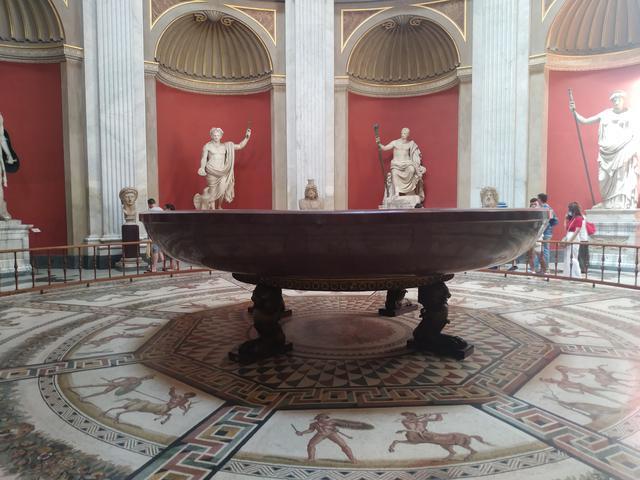Domus Aurea Bathtub

The Domus Aurea Bathtub is a fascinating piece of ancient Roman history that offers a glimpse into the luxurious lifestyle of the emperors of the time. This enormous red porphyry cup, believed to have belonged to the opulent Domus Aurea palace, is a testament to the extravagance and wealth of Emperor Nero. The bathtub, with a diameter of five meters and a capacity of forty people, is a remarkable example of the grandeur and sophistication of Roman architecture and design. Made from a single piece of red porphyry imported from Egypt, the bathtub was a symbol of status and power, as red porphyry was considered the most expensive marble of its time.
The Domus Aurea, also known as the "Golden House," was a sprawling palace complex built by Emperor Nero after the great fire of Rome in 64 AD. The palace was a lavish display of Nero's wealth and power, featuring elaborate frescoes, intricate mosaics, and luxurious furnishings. The discovery of the Domus Aurea in the 16th century during urban reforms in Rome revealed the opulence and grandeur of Nero's reign, as well as the technological advancements of Roman engineering.
The red porphyry bathtub, with its rich color and exquisite craftsmanship, was a centerpiece of the Domus Aurea's lavish interior. The use of red porphyry, known as "imperial marble," was a symbol of prestige and luxury in ancient Rome, as it was rare and expensive to obtain. The bathtub's size and design reflect the grandeur and extravagance of Nero's palace, showcasing the emperor's desire for opulence and excess.
Despite the disappearance of the original red porphyry bathtub, similar pieces can still be found today, each with its own unique history and value. The legacy of the Domus Aurea and its luxurious furnishings continue to captivate historians and art enthusiasts, offering a glimpse into the decadent lifestyle of ancient Rome's elite. The discovery of the Domus Aurea and its treasures has provided valuable insights into Roman art, architecture, and culture, shedding light on the sophistication and creativity of the ancient world.
In conclusion, the Domus Aurea Bathtub is a remarkable artifact that highlights the opulence and extravagance of ancient Roman society. Its exquisite craftsmanship, use of rare materials, and historical significance make it a valuable piece of art and history. The bathtub's connection to Emperor Nero and the Domus Aurea palace adds to its allure, offering a window into the lavish lifestyle of Rome's elite. As a symbol of wealth and power, the red porphyry bathtub stands as a testament to the grandeur and sophistication of Roman civilization.
© ChatGPT 3.5
*Colored marbles were a symbol of social status and were used to decorate Roman palaces and temples, as well as the private residences and luxury villas of the aristocracy, in order to demonstrate to the people their enormous power. Any character with social and political aspirations had colored marble columns placed in their house.
*The red porphyry marble from which the bathtub is made became as valuable as gold. It came from Egypt and a route was built that was used solely to transport this material. Its purple color was related to the god Jupiter, father of all gods and protector of Rome. Its use was exclusive to the emperors.